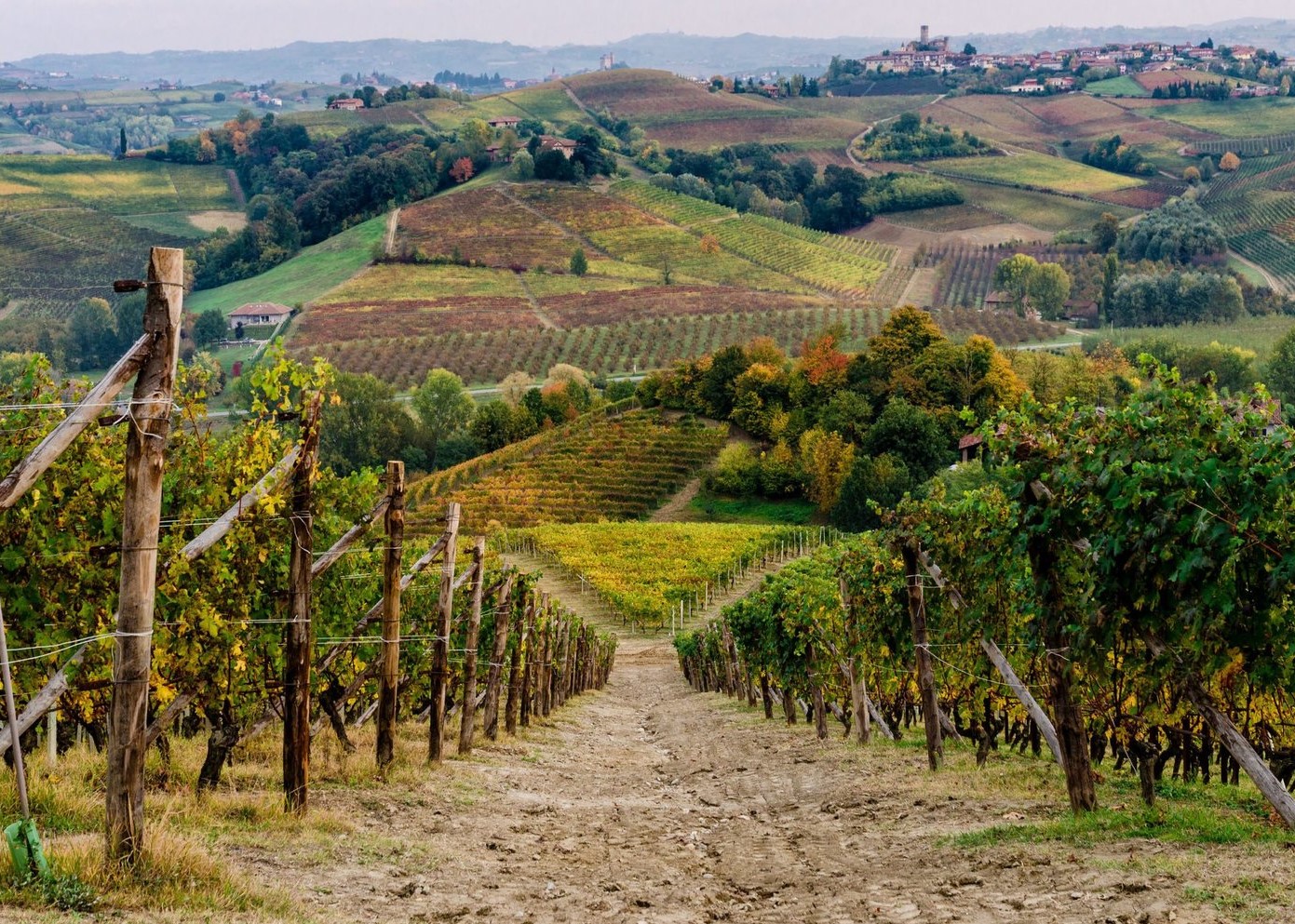
The Langhe, pronounced “lahn-gay”, area of Piedmont is tucked in the southern part of Piedmont in the Cuneo province tucked between the Alps and not too distant from the Mediterranean Sea. Location is key in understanding where grapes are grown due to the influences created by the geography and climate, in this case, where the Alpine and Mediterranean air breezes meet. It is also bordered by the Tanaro River.
The Langhe area is also very hilly so there are various microclimates between the hills and valleys where these vineyards are located. The Langhe in Celtic translates to “tongues of land”, which helps describe the shape in the way the hills and valleys run parallel to each other. It also translates in local dialect to the plural form of langa, which translates to long, low hills.
With the town of Alba standing as the main capital of this area it’s a mesmerizing area in Piedmont with picturesque castles, villages and vineyards galore including some of Italy’s most notable wines including Barolo and Barbaresco.
As you may be familiar that Barolo and Barbaresco are produced from the Nebbiolo grape, but this area of the Langhe is rich in other native grapes that are much more approachable than our ageworthy friends and that don’t break the bank. Other red grapes from the Langhe include Dolcetto, Barbera, Pelaverga and Freisa. Pelaverga and Freisa may be more of a challenge to locate, but are great summer reds to enjoy on those warm days with a slight chill. Dolcetto is a great all-around balanced wine with fruit, acidity and tannin and Barbera is a grape high in acidity making it very food friendly. Some of the whites of the Langhe include Arneis and Favorite along with other international grapes as well.
If one has yet to experience Barolo and Barbaresco, but cannot afford the higher price tag that goes along with them, you can still try great Langhe Nebbiolo wines that don’t qualify for whatever reason under the DOCG of Barolo and Barbaresco. It will still give you an understanding of what the Nebbiolo grape is all about and many of the producers of Barolo and Barbaresco are also growing Nebbiolo that won’t be bottled under the DOCG allowing you to still drink great wine from respected producers.



